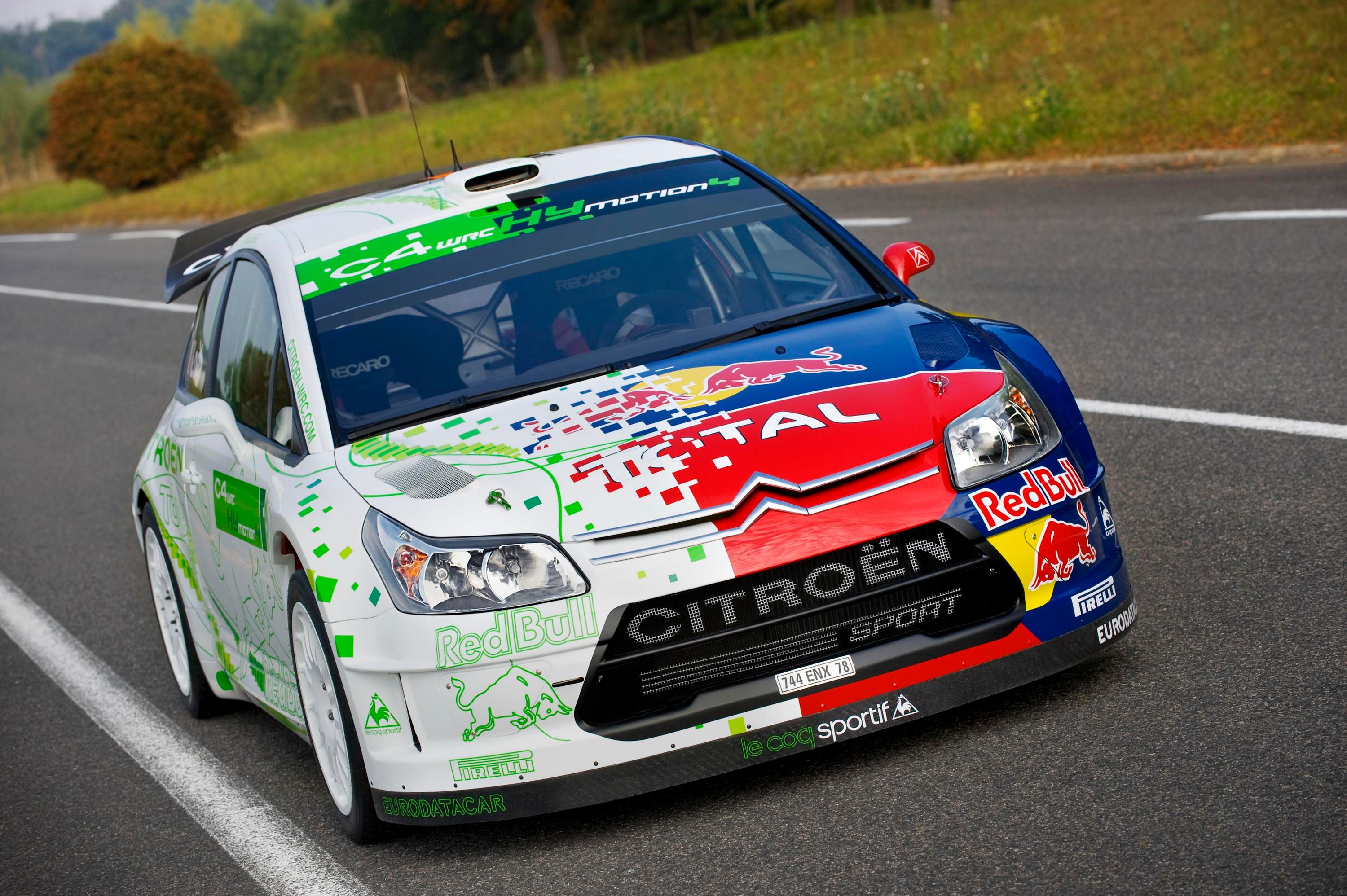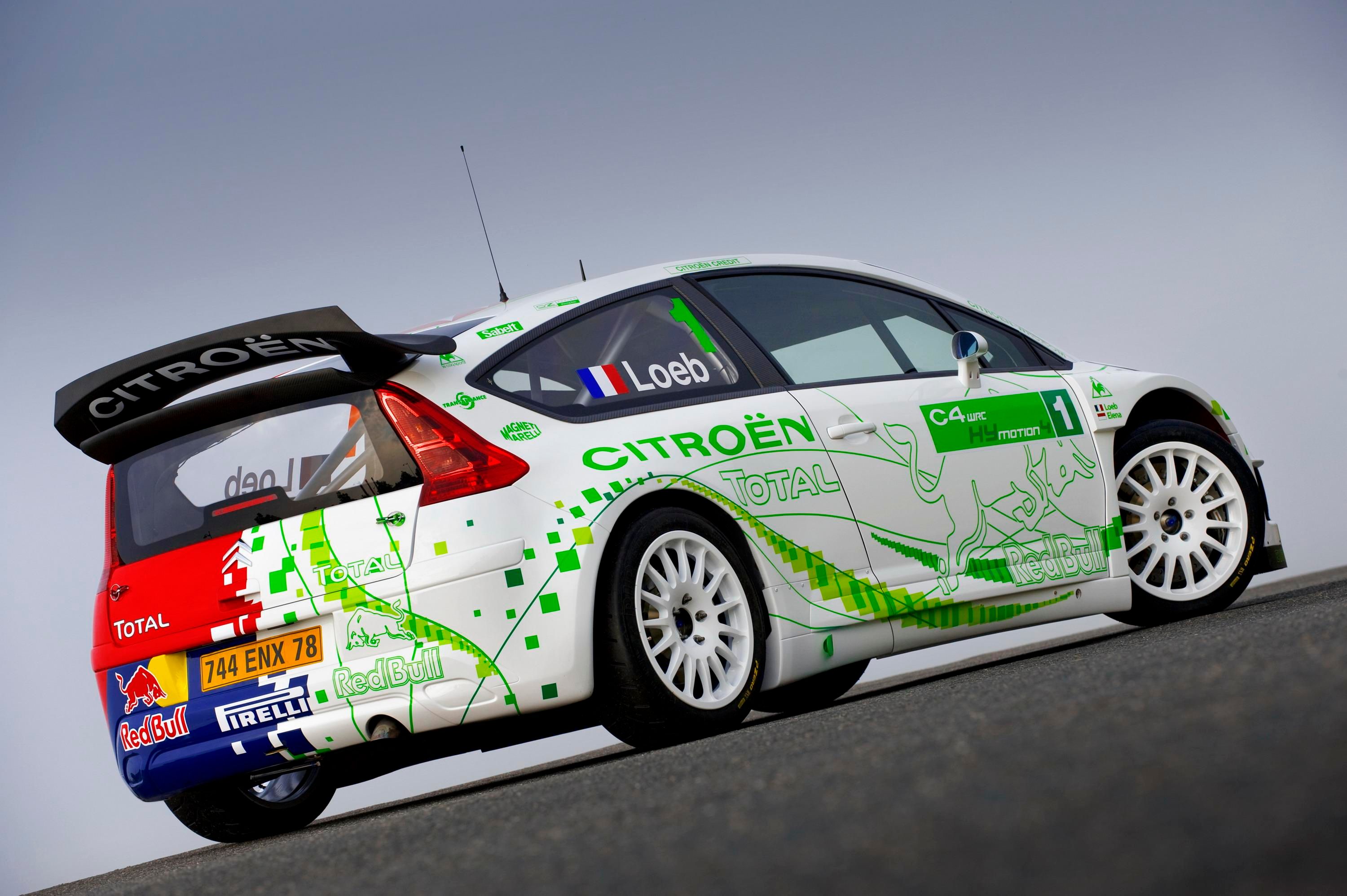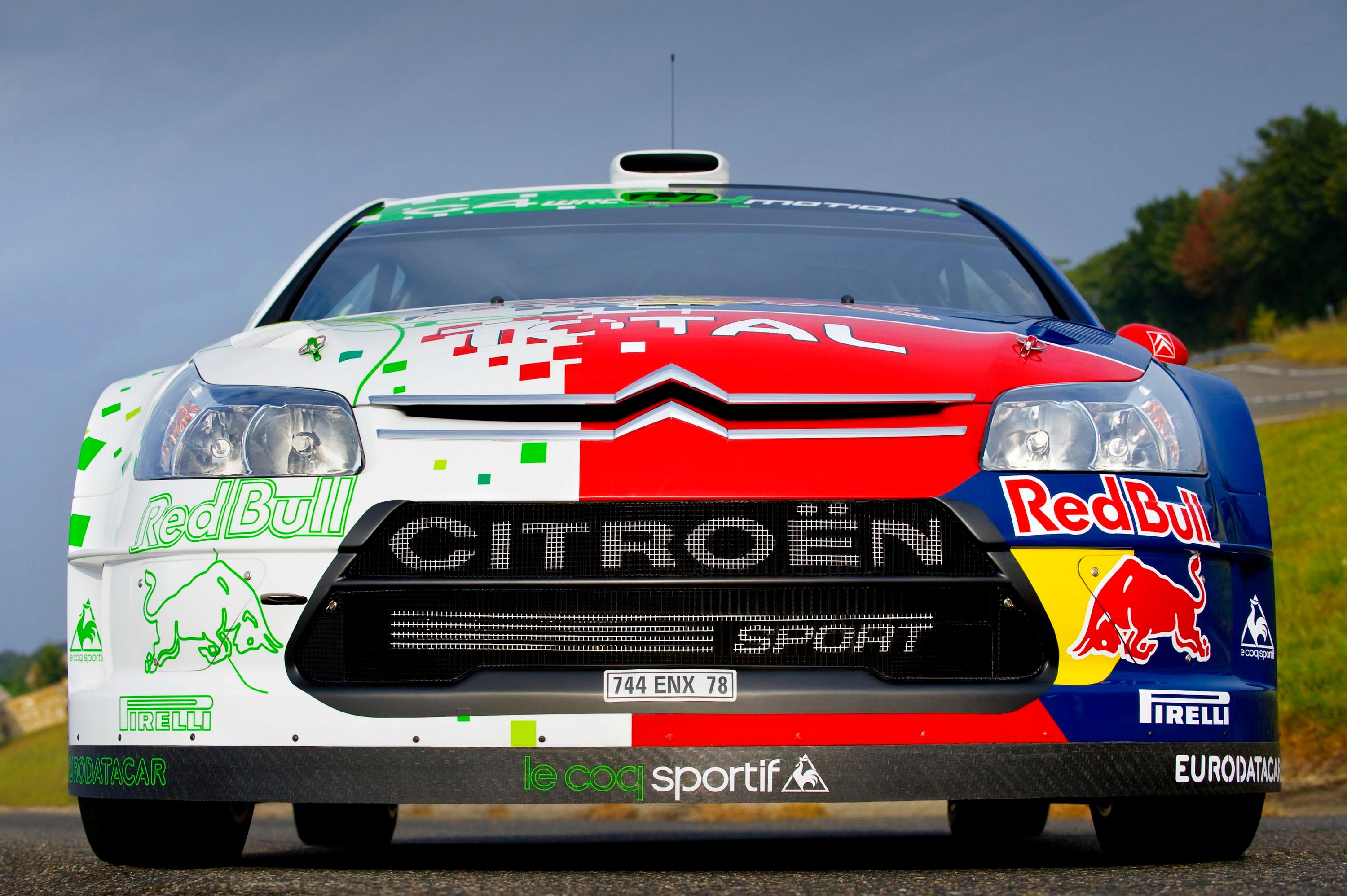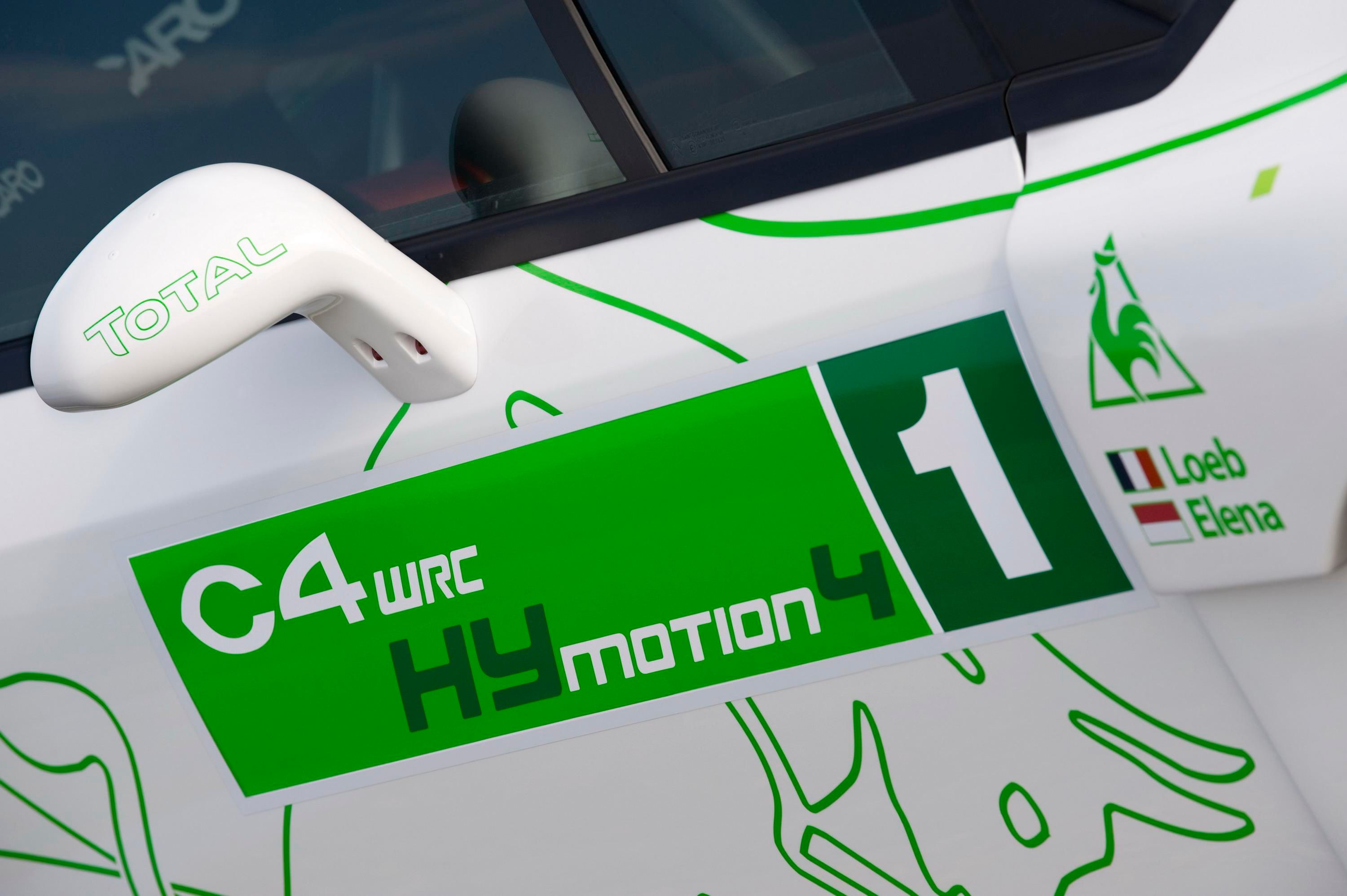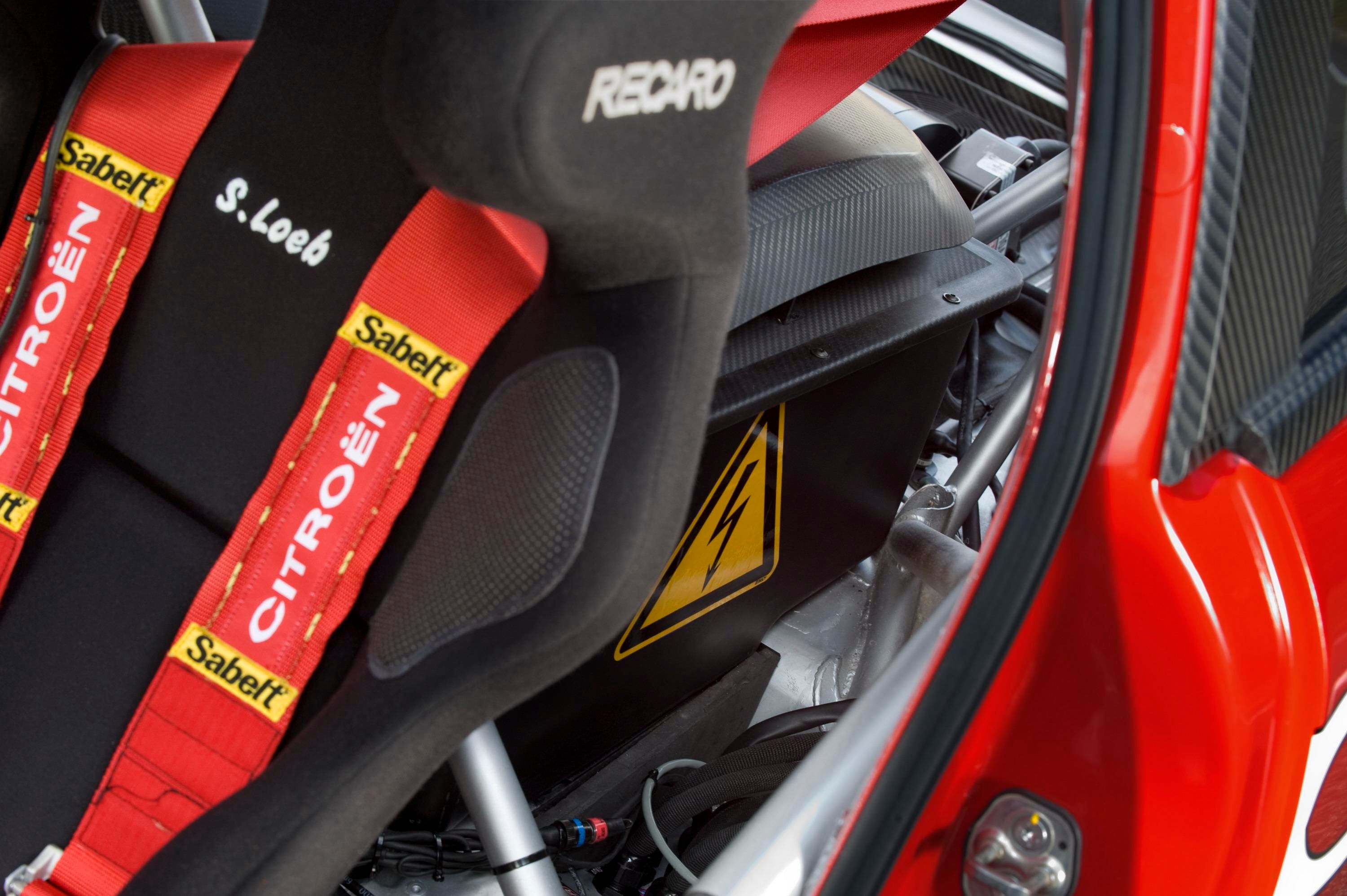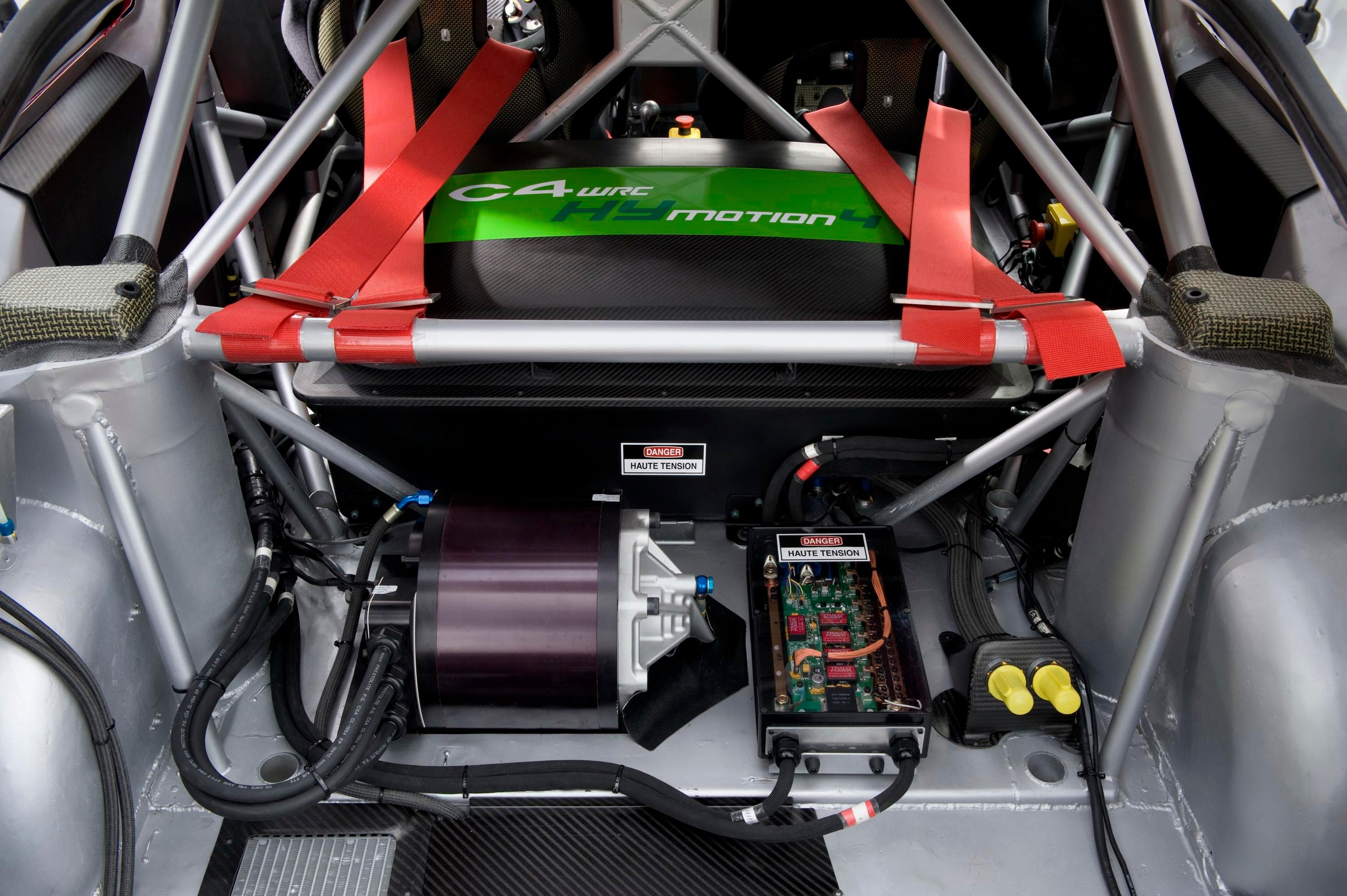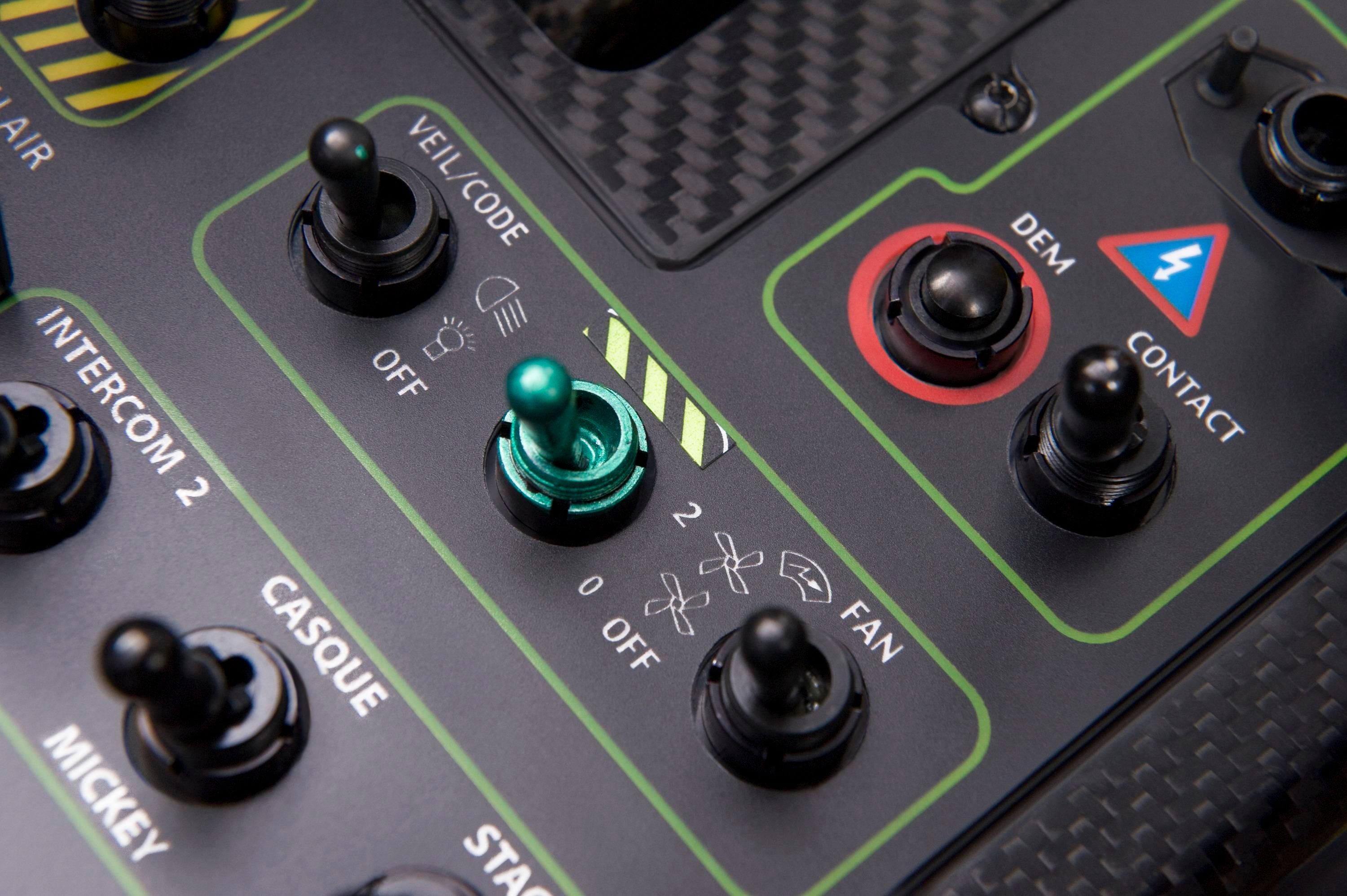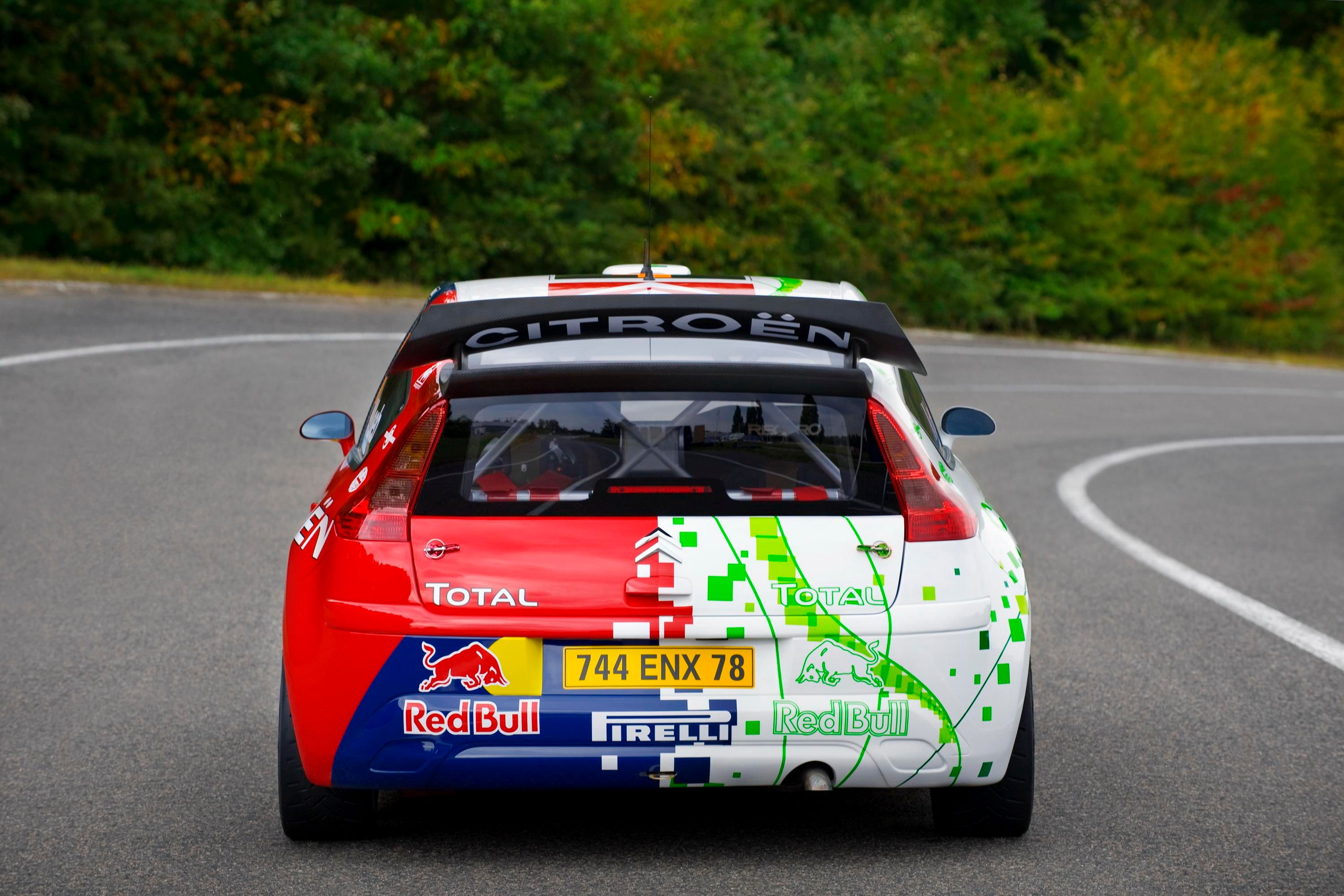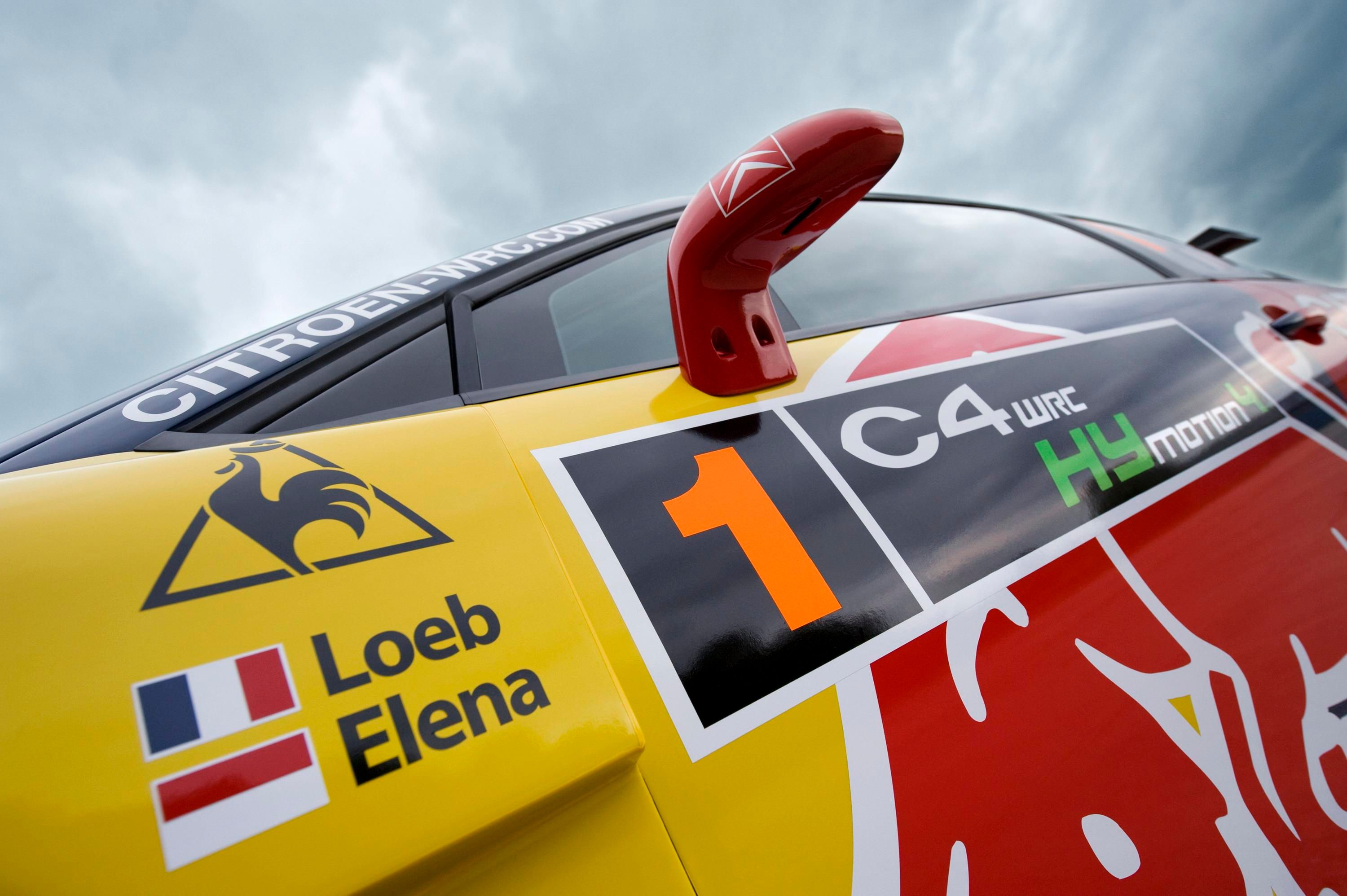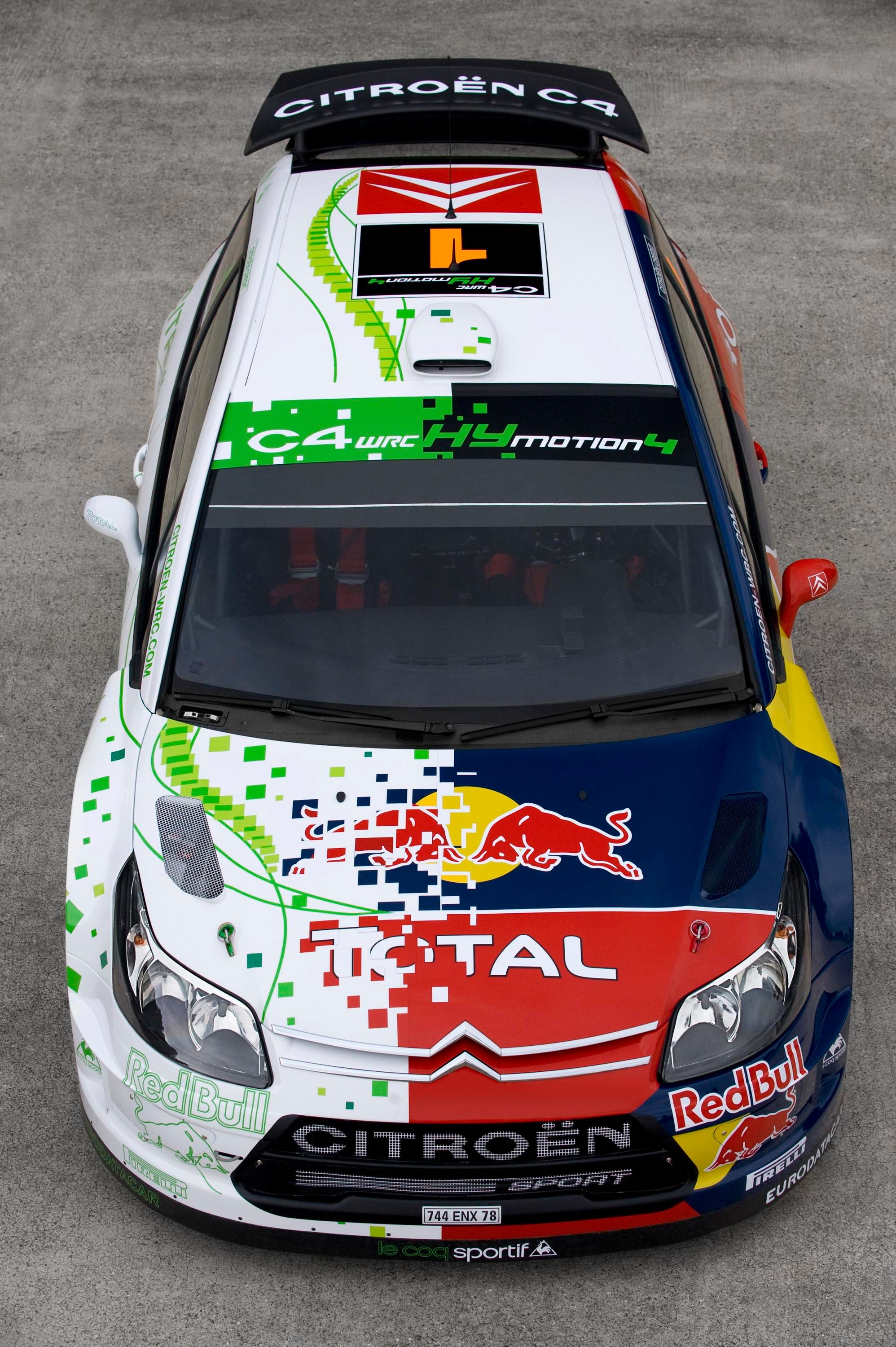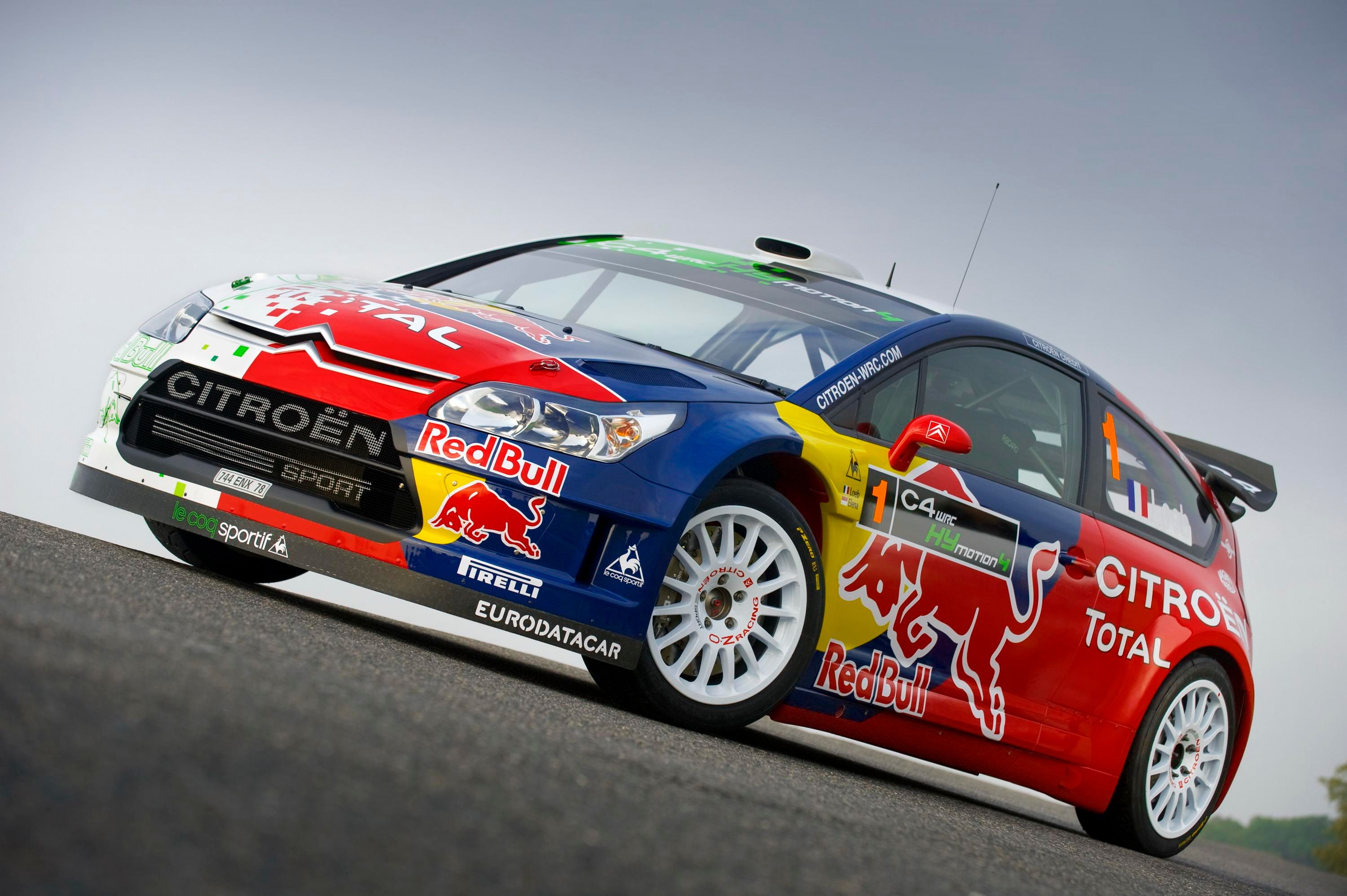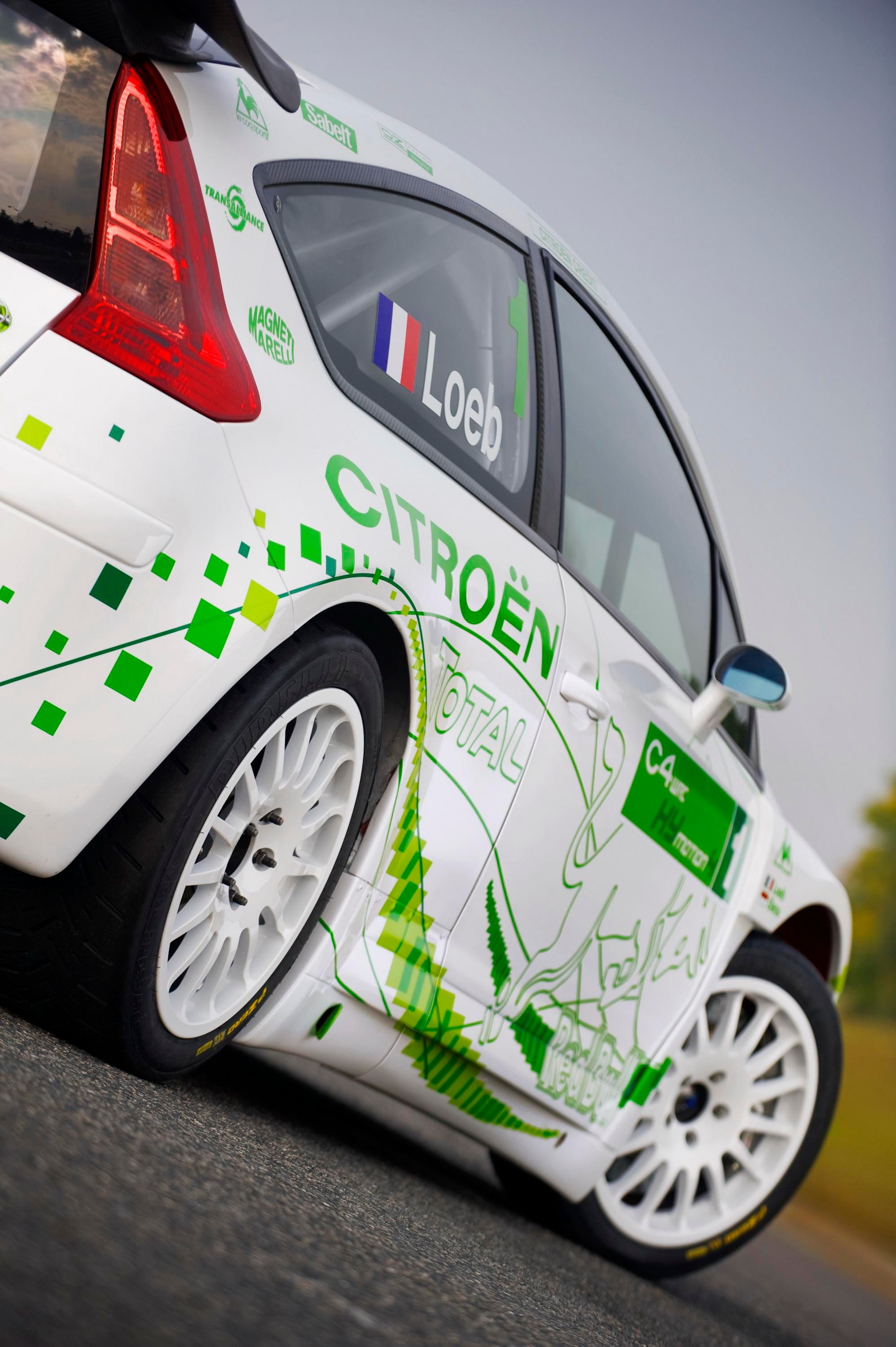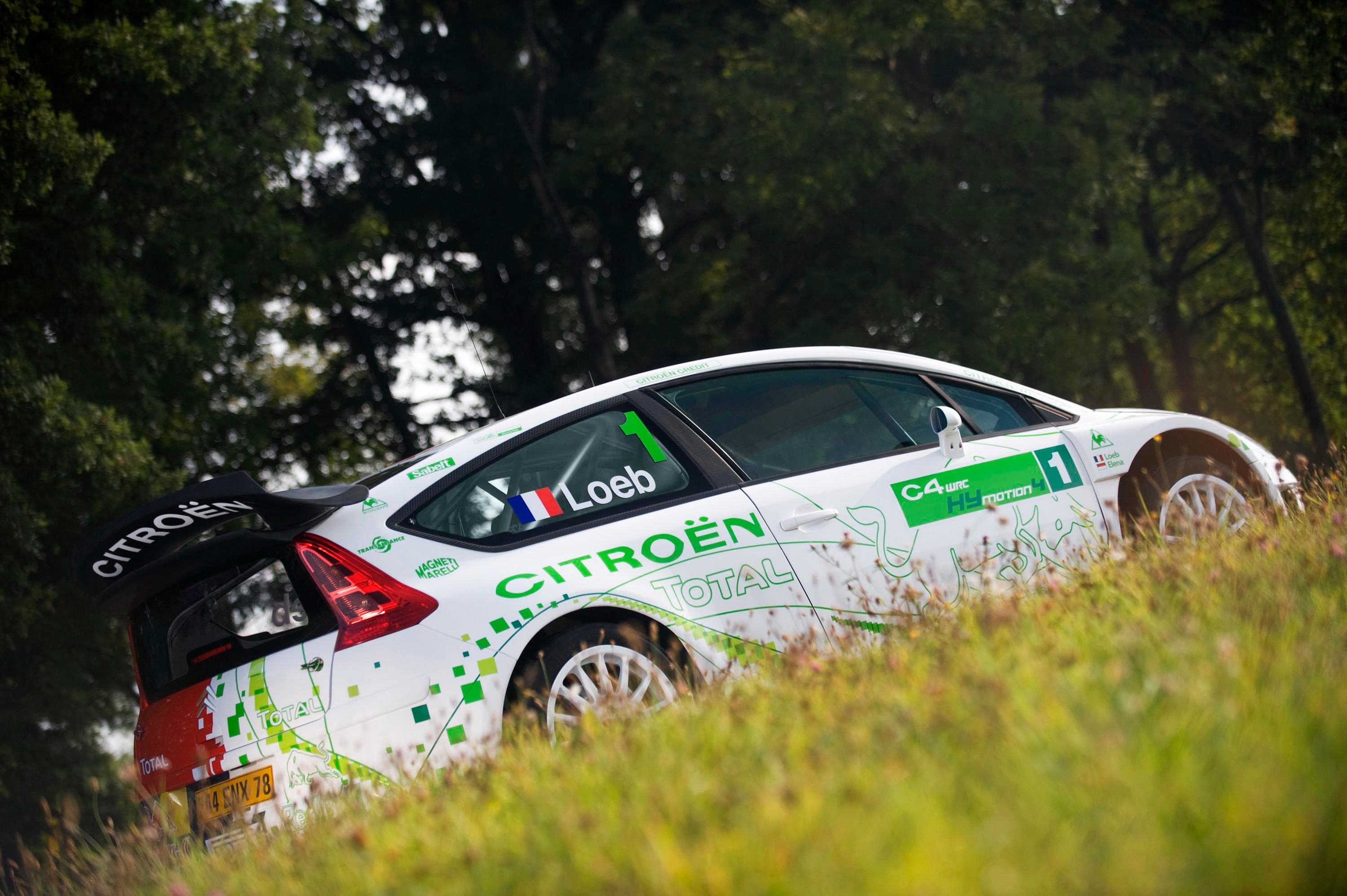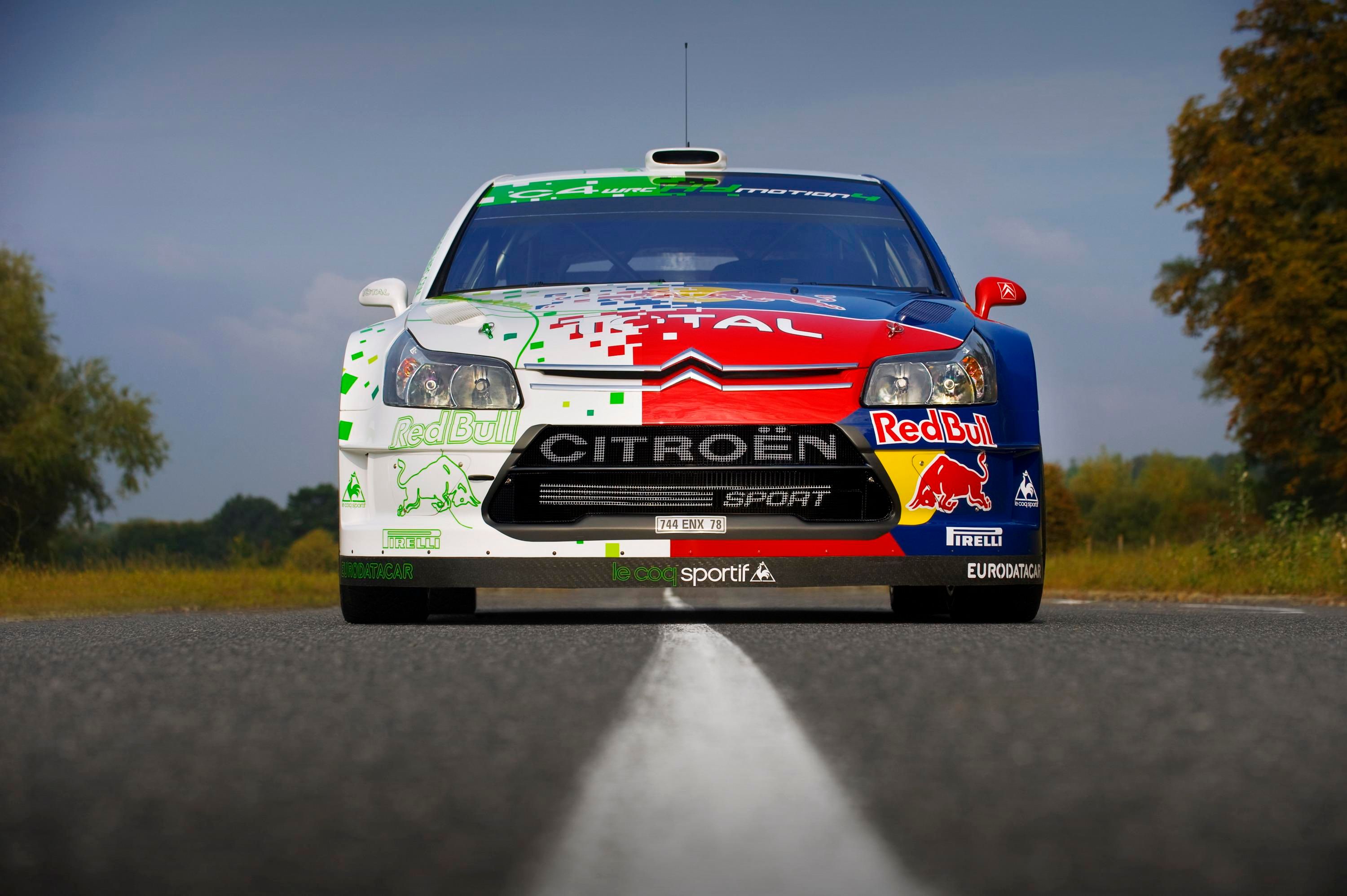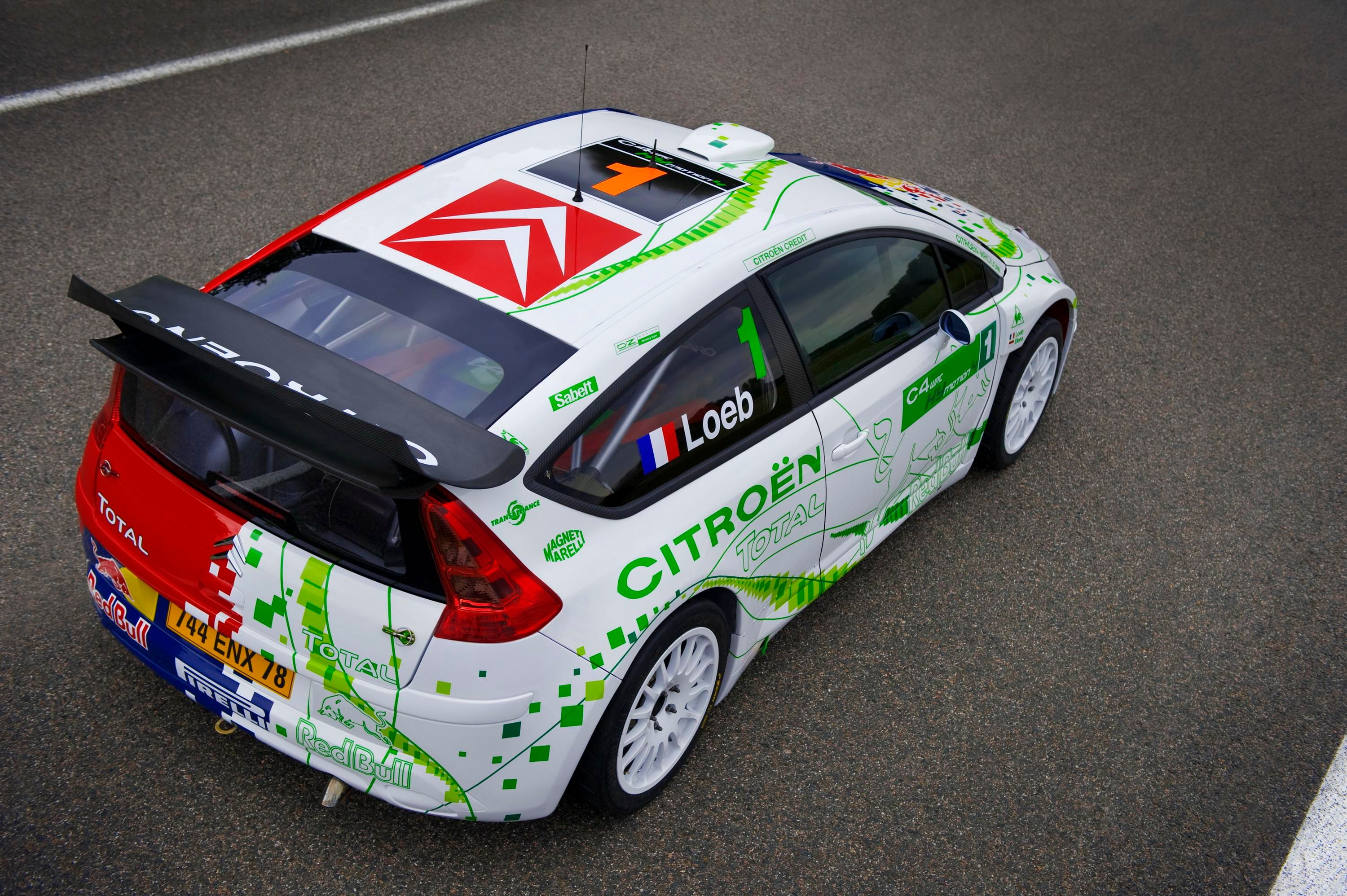Citroen unveiled at the Paris Auto Show the C4 WRC HYmotion4 concept car, the first WRC car to be equipped with a hybrid energy recovery system which delivers added performance and lower emissions.
These real performance gains have been achieved thanks to the innovative technological solutions which have been developed to transform the C4 WRC into the C4 WRC HYmotion4.
The Citroen C4 WRC HYmotion4 is powered by a 2.0 liter turbocharged 4-cylinder engine that delivers 320bhp at 5,500rpm and 58mkg of torque at 2,750rpm.
Press release after the jump.
2008 Citroen C4 WRC HYmotion4
- Make: Array
- Model: 2008 Citroen C4 WRC HYmotion4
- [do not use] Vehicle Model: Array
Press release
The 2008 Paris Motor Show sees Citroën take the wraps off its C4 WRC HYmotion4 concept car, the first WRC car to be equipped with a hybrid energy recovery system which delivers added performance and lower emissions.
This new concept car – which sports a split livery, with the team's familiar World Rally Championship colours on one side, and a design based on a more restful colour scheme redolent of natural materials on the other – illustrates Citroën's stand on environmental matters, including in the world of motor sport which stands out as a source of performance-related, reliable and rational technological innovations.
The HYmotion4 system enables a proportion of the kinetic energy produced during braking to be recovered and stored. This energy is accumulated by a motor-generator in the form of electricity in battery packs positioned at the rear of the car. It can then be employed either to deliver extra power when accelerating or to drive the car using emission-free electrical power alone, with no engine noise or exhaust fumes.
This system can significantly enhance the efficiency of a competition car during the different running phases:
- Braking energy is not entirely dissipated in the environment,
- The availability of additional torque thanks to an electric motor increases the internal combustion engine's useful rev range,
- At a constant speed in electric mode, the vehicle benefits from a longer range (plus 40km), while fuel consumption on road sections is reduced by 30%.
These real performance gains have been achieved thanks to the innovative technological solutions which have been developed to transform the C4 WRC into the C4 WRC HYmotion4. The system comprises four key components:
- A 125kW electric motor-generator connected to the rear differential (gear driven),
- A pack of 990-cell lithium-ion batteries which deliver a voltage of 400V. Positioned over the fuel tank.
- Two additional cooling systems for the motor-generator and batteries, with a specific radiator positioned under the right-hand side of the floor.
- An electronic control unit to manage the system's power electronics circuit.
The driver is free to select one of the four running modes using the HYmotion4 pre-selection rotary control:
- Internal combustion engine mode: the most frequently-used mode for the C4 WRC (used on stages and potentially on road sections).
- Internal combustion engine mode with energy recovery: activated on stages; improves the brakes' resistance to fade and charges the batteries.
- Electric motor mode with energy recovery: used on road sections (untimed), in built-up areas or in the service park; contributes to increasing the car's range, reduces noise in built-up areas, and permits the internal combustion engine not to be used when it is not indispensable.
- Boost mode (internal combustion engine and electric modes combined): can be selected at the desired moment on a stage to benefit from an additional 300Nm-1 of torque for a limited time.
This performance gain makes optimising energy management a new parameter for rally drivers to master.
C4 WRC HYmotion4 fits perfectly with Citroën's long-term commitment to motor sport and its consequential environmental policy. This concept underpins the brand's policy to conceive very high performance cars which respect the environment and is the first step prior to other
developments which will be guided by future evolutions to the FIA regulations.

